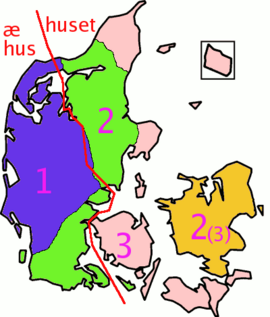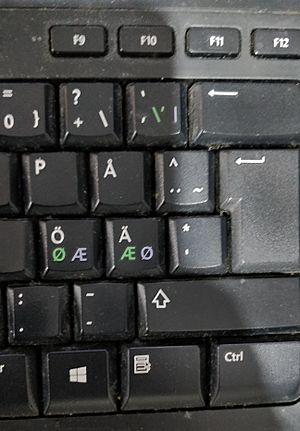Æ facts for kids
Quick facts for kids Æ |
|
|---|---|
| Æ æ | |
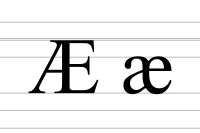 |
|
| Usage | |
| Writing system | Latin script |
| Type | Typographic ligature |
| Language of origin | Latin language |
| Phonetic usage | [æ, a, i, i, e] |
| History | |
| Development | |
| Other | |
Æ (the small letter is æ) is a special character. It looks like the letters a and e joined together. It started as a "ligature" in Latin, which means it was a way to write two letters as one.
Over time, Æ became a full letter in some languages. These include Danish, Norwegian, Icelandic, and Faroese. It was also used in Old Swedish a long time ago.
In the International Phonetic Alphabet (IPA), Æ stands for a sound like the 'a' in the English word cat. In Old English, this letter was called æsc, which means "ash tree". This name came from an old rune that looked similar.
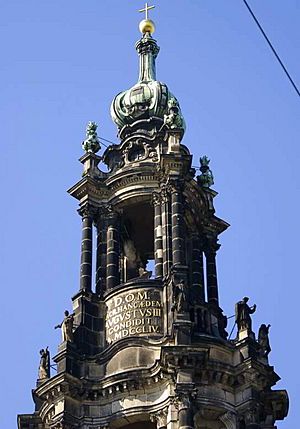
Contents
Languages Using Æ
Latin
In Classical Latin, AE was a diphthong. This means it was a sound made by combining two vowel sounds. It sounded a bit like the 'i' in fine in English. People usually wrote 'A' and 'E' separately. But in medieval times, they started using the ligature æ. This was partly because the sound of æ changed to a simple 'e' sound. Sometimes, the ligature was even simplified to an 'e' with a small tail, called e caudata. Even today, you might see æ in old liturgical books and music.
French
In the modern French alphabet, æ is called 'e-dans-l'a', meaning 'e in the a'. It is used in words borrowed from Latin and Greek. Examples include curriculum vitæ (a resume) and et cætera (and so on). It's also in the first name Lætitia. A famous French song even spells out the name Lætitia using this special letter!
English
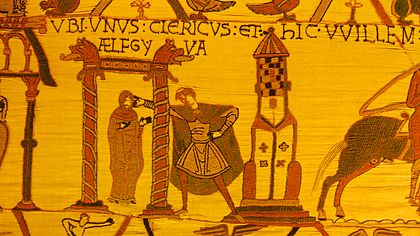
In English, æ is not used very often. If you can't type æ, like on a typewriter, people usually just write ae instead.
In the United States, many words that used to have æ are now spelled with just 'e'. For example, medieval is more common than mediaeval. However, archaeology is still preferred over archeology, even in the US.
Sometimes, æ is used to make words look old or in quotes from old texts. For example, you might see dæmon or æther spelled with æ.
You can also see æ on old gravestones from the 1800s. It was a short way to write ætate, which means "at the age (of)". So, "Æ xxYs" meant "at the age of xx years". In the study of old coins (numismatics), "Æ" is a short way to say "bronze". This comes from the Latin word aes.
In Old English, æ made a sound between 'a' and 'e'. It was very much like the short 'a' sound in cat in many English accents today.
Other Germanic Languages
In Old Norse, æ stood for a long 'e' sound.
In most Faroese dialects, æ has different pronunciations depending on where it is in a word. It can sound like 'ea' or a long 'e'. Sometimes, it even sounds like 'a'.
In Icelandic, æ is a diphthong that sounds like 'ai'. It can be long or short.
In Danish and Norwegian, æ is a separate letter in the alphabet. It comes after 'z' and before 'ø' and 'å'.
In many dialects of Norwegian and some Danish dialects, the word "I" (meaning jeg in Standard Danish/Norwegian) is pronounced with an 'æ' sound. So, people sometimes spell it with "æ". In western Danish dialects, æ is also used as the word for "the" before a noun, like æ hus (the house). This is different from other Nordic languages, where "the" is usually added to the end of the noun.
The similar letter in German, Swedish, and Finnish is ä. But it's not in the same spot in their alphabets. In German, ä is just a form of 'A'. In Swedish and Finnish, ä is a separate letter, placed near the end of the alphabet.
Ossetic
The Ossetic language used the letter æ when it was written with the Latin alphabet from 1923 to 1938. After that, Ossetian started using a Cyrillic alphabet. This Cyrillic alphabet has a letter that looks exactly like æ (Ӕ and ӕ). In Ossetian, it sounds like a soft 'uh' sound.
South American Languages
The letter æ is also used in the official writing system of the Kawésqar language, spoken in Chile. It's also found in the Fuegian language called Yaghan.
International Phonetic Alphabet
The symbol [æ] is used in the International Phonetic Alphabet (IPA). It shows a vowel sound like the 'a' in the English word cat. This is probably the sound the Old English letter æ used to make. In the IPA, this symbol is always written in small letters.
Typing the Character
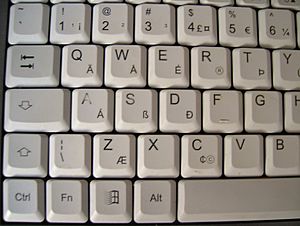
There are many ways to type the æ character:
- In HTML, you can use
Ææ - On Windows computers, you can hold down the Alt key and type 0198 for the capital Æ, or 0230 for the small æ.
- In Microsoft Word, press Ctrl then A or a.
- On Mac OS, press Option for æ, and Option for Æ.
- On iPhones, iPods, iPads, Android phones, and Kindles, you can usually hold down the "A" key until a menu pops up, then choose æ.
- On US-International keyboards, you can often get Æ by pressing AltGr.
- Keyboards in Iceland, Denmark, and Norway have a special key just for Æ.
See Also





